Learn to Sew
How to Clean Your Sewing Machine
Regular cleaning and maintenance is the best way to keep your sewing machine working well and running smoothly. Built-up lint and debris can lead to skipped stitches, tension issues, and all sorts of problems. But fear not! In this post, I’ll show you how to clean your sewing machine, step-by-step.
Step 1: Gather Supplies to Clean Your Sewing Machine
Some of the cleaning tools you need come with your sewing machine, such as a small screwdriver and lint brush.
Here’s a list of everything you need to gather to clean your sewing machine:
- Soft Cloth
- Lint Brush with Stiff Bristles
- Small Screwdriver
- Tweezers
- Small Vacuum
- Sewing Machine Oil
- Spare Sewing Machine Needles
- 500-grit Sandpaper (optional)
- Sewing Machine Manual
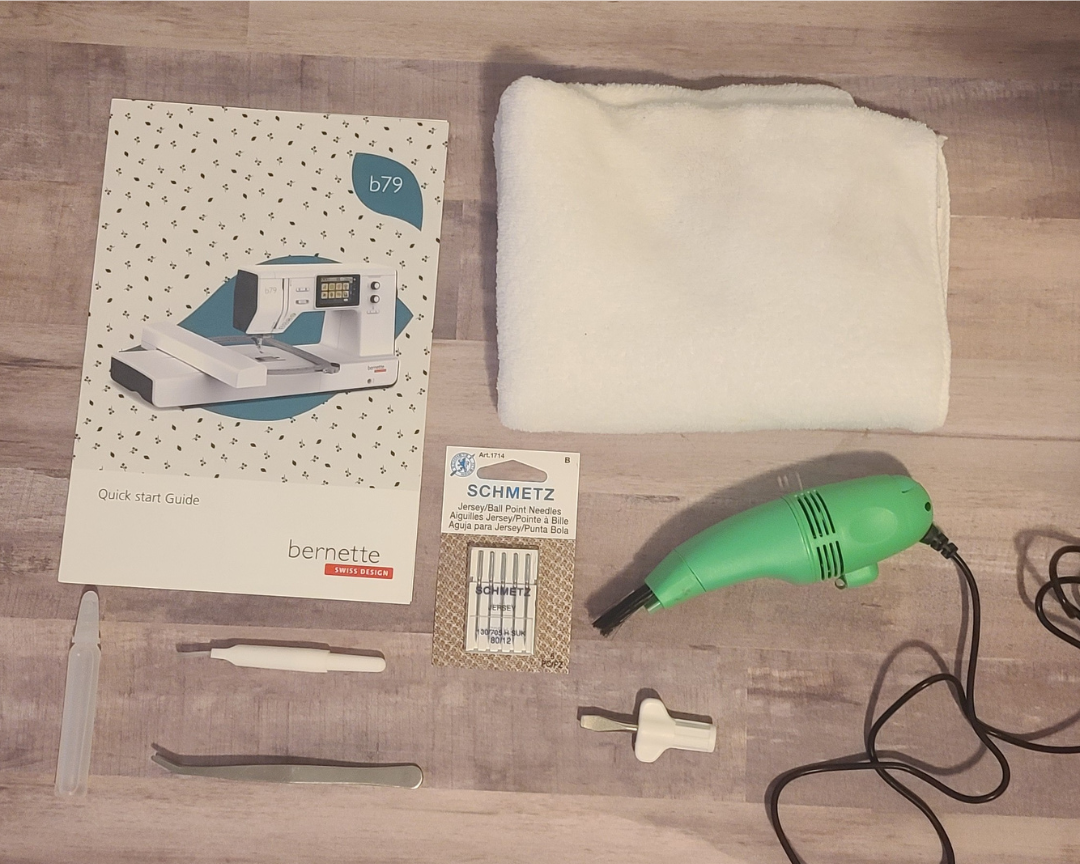
Sewing & Quilting Tools
Every sewing machine comes with an instruction manual. There will be a section on cleaning and maintenance that shows you how to disassemble your machine for cleaning and provides guidance on where to oil it, if necessary.
I’m going to show you general guidelines on how to clean your sewing machine. It’s important to realize that every machine is a little different. Some only require you to clean in the bobbin case and tension discs. Others have removable plates on the top and side that allow you to clean the gears. In general, older sewing machines require more tedious cleaning and oiling than newer machines. Your manual will show you the best way to clean your specific sewing machine.
Step 2: Prepare Your Sewing Machine for Cleaning
First, unplug your sewing machine to prevent injuries while cleaning. Don’t neglect this step! You wouldn’t want to accidentally touch the pedal and have your fingers get hit by the needle. If you don’t have enough light to see what you’re doing with the sewing machine turned off, get a sewing machine light strip. It’s a useful accessory that operates separately from your machine.
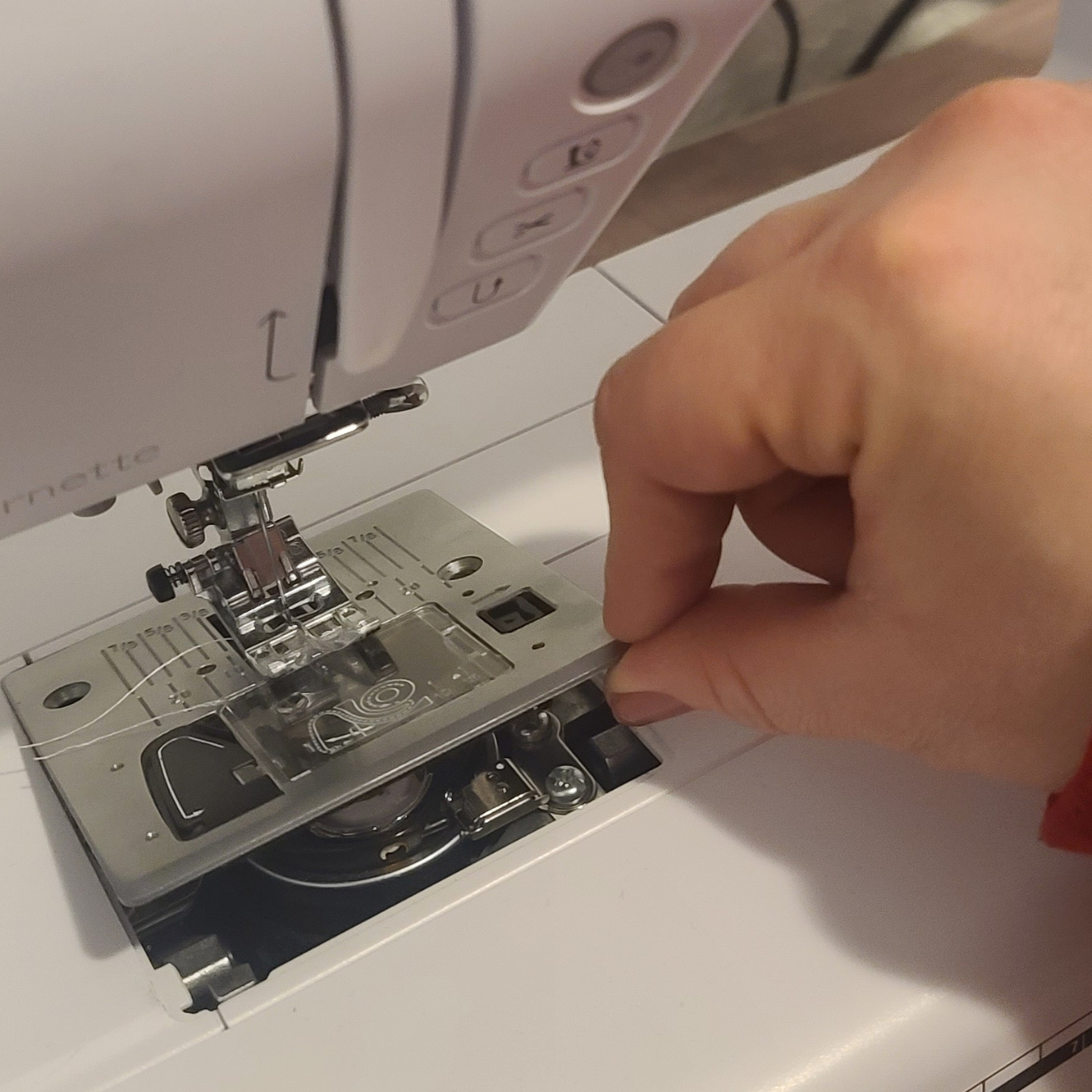
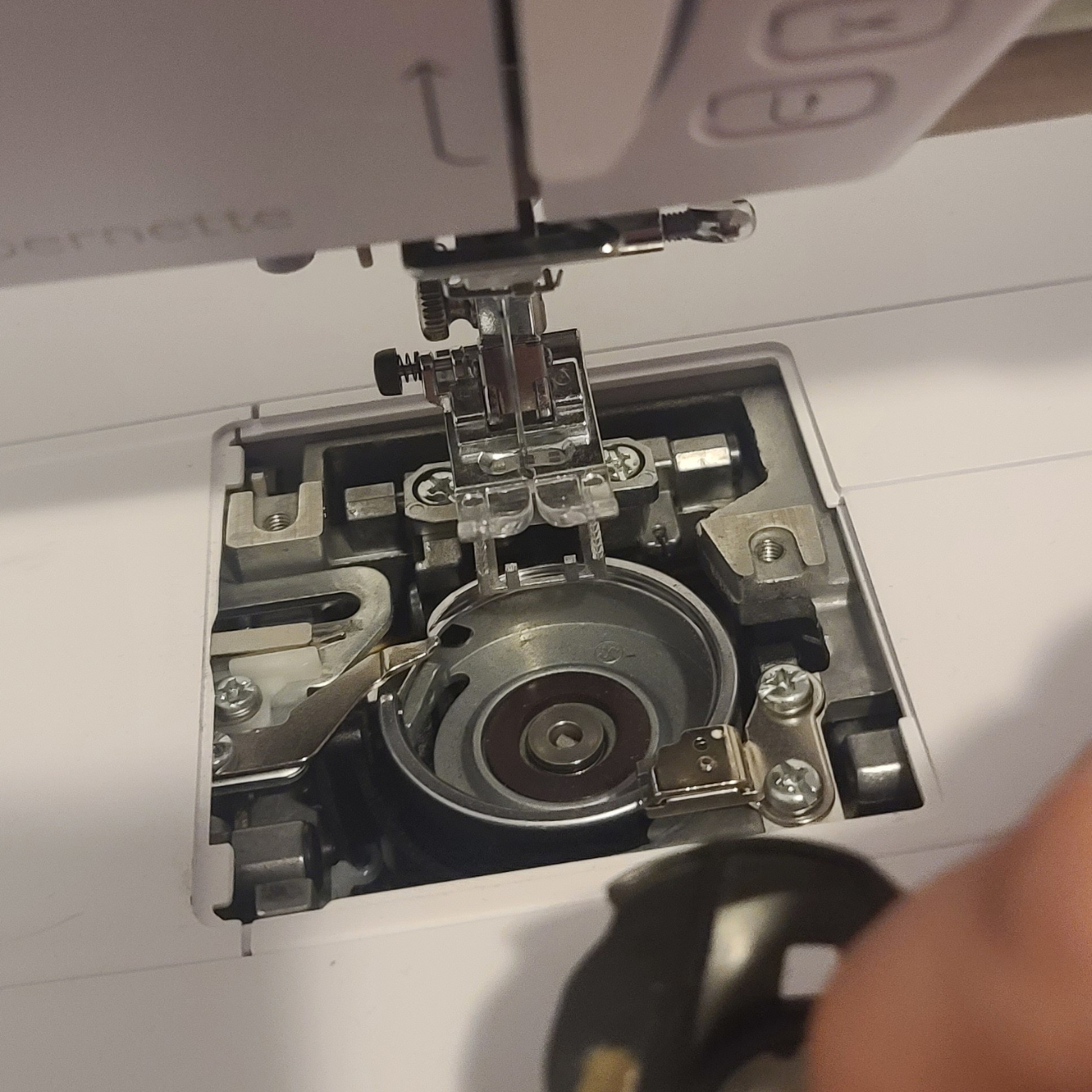
You also need to unthread your sewing machine so you can clean the tension discs. Gently remove the thread by cutting it at the top and pulling it forward through your machine. Pulling backwards could mess up your tension!
Most of the lint accumulation happens under the needle plate around the feed dogs and in the bobbin case. So, you need to remove the needle plate by undoing the screws. You may need to remove the presser foot and needle to get the needle plate off—it depends on your machine. Set these pieces aside in a safe place so they don’t get lost.
Note: If you’re worried about putting your sewing machine back together after you’re done cleaning, take pictures along the way. You can also check your user manual for picture steps on how to clean your sewing machine.
Step 3: Clean Under the Needle Plate and Feed Dogs
Once the needle plate is removed, use a lint brush and tweezers to remove large pieces of lint and stray thread from the feed dogs and surrounding area, including the thread cutter, if your sewing machine has that feature. Lower and raise your feed dogs for better visibility and reach. Then, use a small sewing machine vacuum to remove any remaining lint. You should never use canned air on your sewing machine because it can push lint and dust deeper inside your machine or introduce moisture.
Also, inspect the needle plate for burs where the needle may have hit it. These burs can be sanded off with a fine, 500-grit sandpaper.
Step 4: Clean the Bobbin Case and Shuttle Hook
You need to clean lint out of the bobbin case. The way you access it depends on whether your sewing machine has a top-loading or front-loading bobbin. The complete bobbin housing in top-loading sewing machines can only be accessed while the needle plate is removed. Front-loading sewing machines typically have a trap door that swings open to access the bobbin case.
Remove and clean the bobbin case with a soft cloth. Inspect for burs and sand them off. Then, proceed to clean the shuttle hook and bobbin race inside the bobbin housing, if you can remove them. The shuttle hook is the little piece that spins inside the bobbin case. Top loading sewing machines don’t typically have a bobbin case, but you still need to clean the shuttle hook and race with a cloth and then use a small vacuum to remove the remaining dust and lint in the bobbin housing.
Step 5: Clean the Tension Discs, Thread Take-Up Lever, and Spool Pin
A lot of tension problems come from dirty tension discs. If you’re getting nests of thread on your fabric, it’s likely a tension issue that can be solved by cleaning your sewing machine. Check your manual to see where all the tension discs are located and then use a small vacuum or lint brush to clean them.
When the tension discs are clean, check the thread take-up lever for loose thread and lint. Set your sewing machine’s tension to zero and move the take-up lever to its highest position. This gives you enough space to clean between the discs with a small cloth or brush.
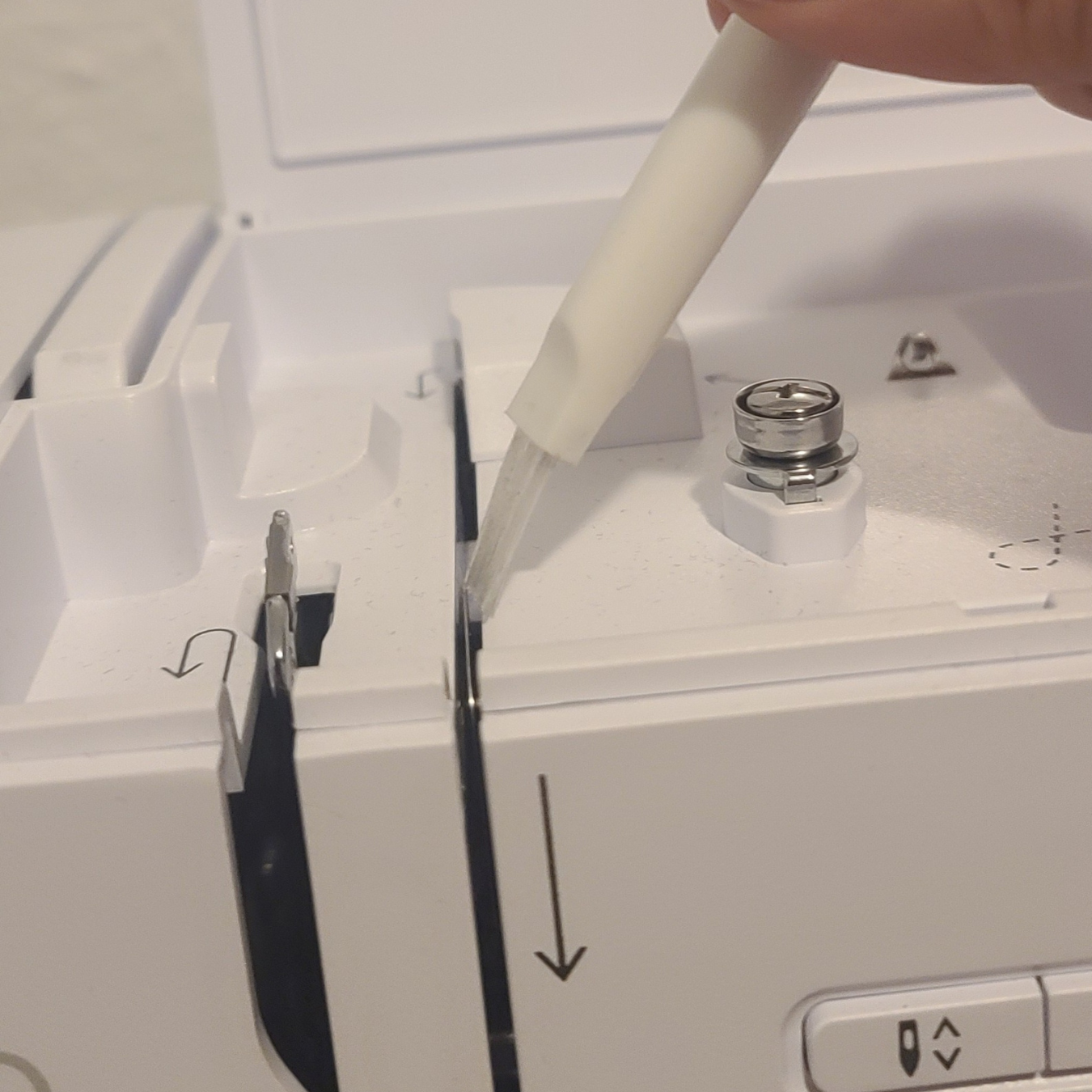
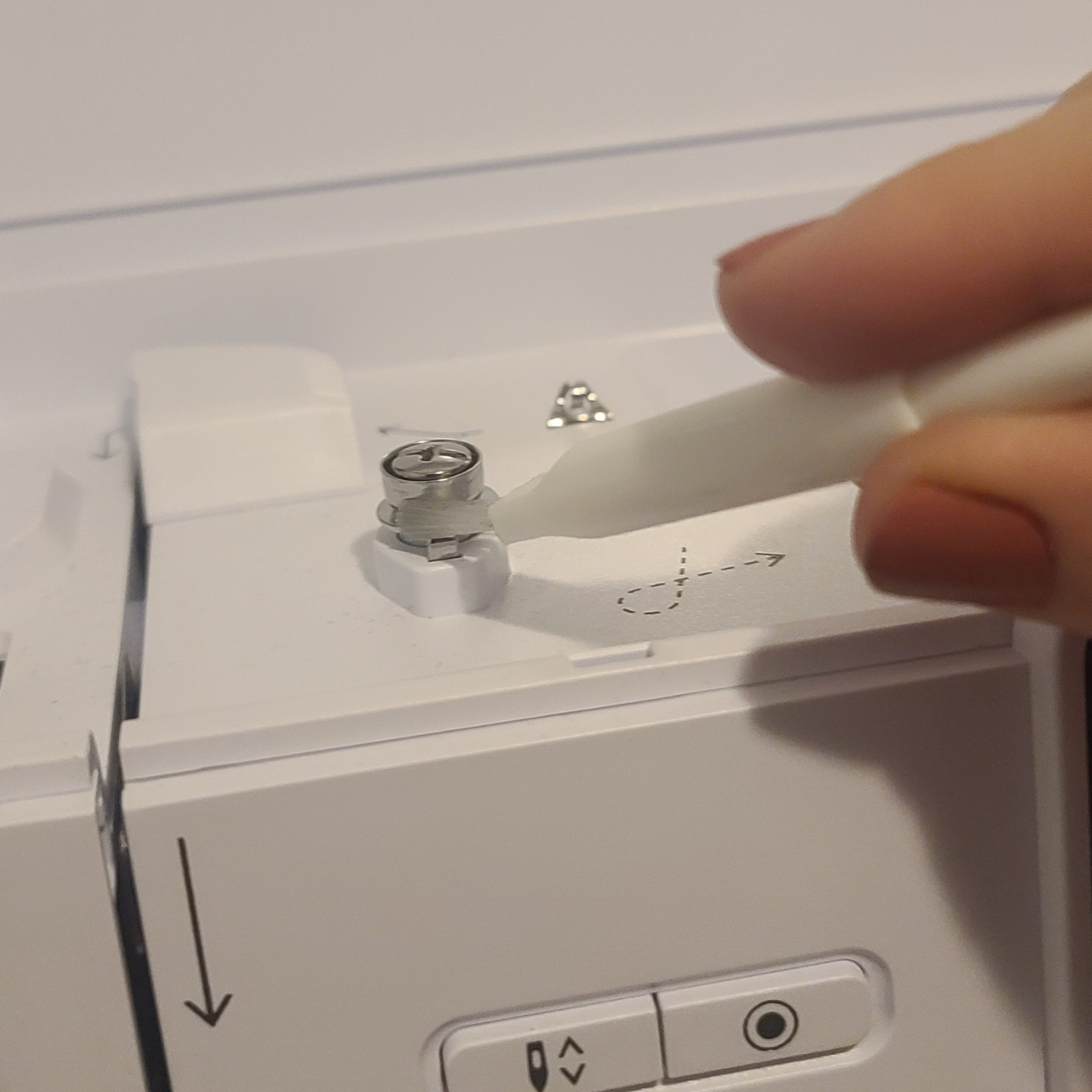
Step 6: Apply a Few Drops of Sewing Machine Oil to Moving Parts
Not all sewing machines require you to oil them. Newer, computerized sewing machines are often self-lubricating. Check your manual to see if your sewing machine requires oil or not. Older sewing machines typically have three to five points that require a drop of oil.
Most sewing machines that need to be oiled will come with a small bottle of oil, but you’ll need to buy more eventually. Only use sewing machine oil! Never use cooking oil, three-in-one oil, or WD-40.
Place a cloth under your machine to catch any drips or spills. Then, follow the instructions in your manual for all the spots you should apply oil. Apply only a small drop of oil to each of the moving parts on your sewing machine. Wipe away any excess oil so that it does not get onto your future sewing projects.
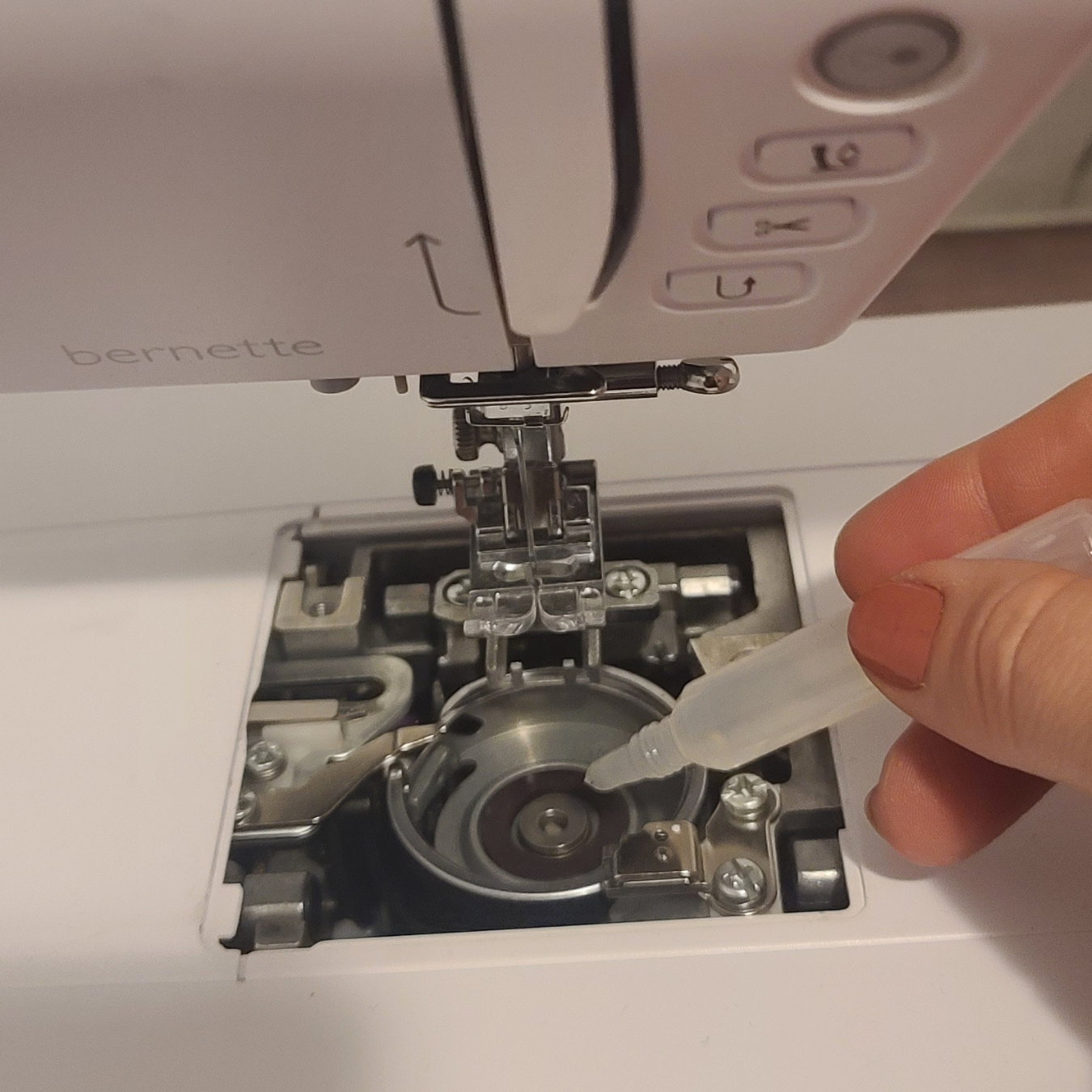
Step 7: Reassemble Your Sewing Machine
Follow the instructions in your manual to reassemble your sewing machine. Make sure all the screws are tight. When you clean your sewing machine, this is also a good time to insert a new needle. If you’re worried about putting your sewing machine back together, clean your sewing machine in sections and reassemble it as you go. You can also take pictures before you take anything apart so you can see how it’s supposed to look.
When everything is reassembled, use a soft cloth to clean the exterior or your sewing machine. Some areas may require a small amount of water or cleaning solution to remove grime, but try not to introduce any moisture into the moving parts of your sewing machine. The metal and gears are susceptible to rust. You can also use sewing machine polish sparingly.
Step 8: Test Your Sewing Machine
When you’re done cleaning and oiling your sewing machine, plug it back in and make sure that it is working properly. Test the stitches on a scrap piece of fabric and adjust your tension accordingly. Also, run some scrap fabric through your machine to remove any excess oil you applied.
Store your sewing machine in a location where moisture, insects, and dust will not get to it. Also, consider the temperature where you are storing your sewing machine. Extreme heat or cold can cause cracking or rusting. For example, don’t store your sewing machine near open windows or over vents in your home. You should also cover your machine with a dust cover.
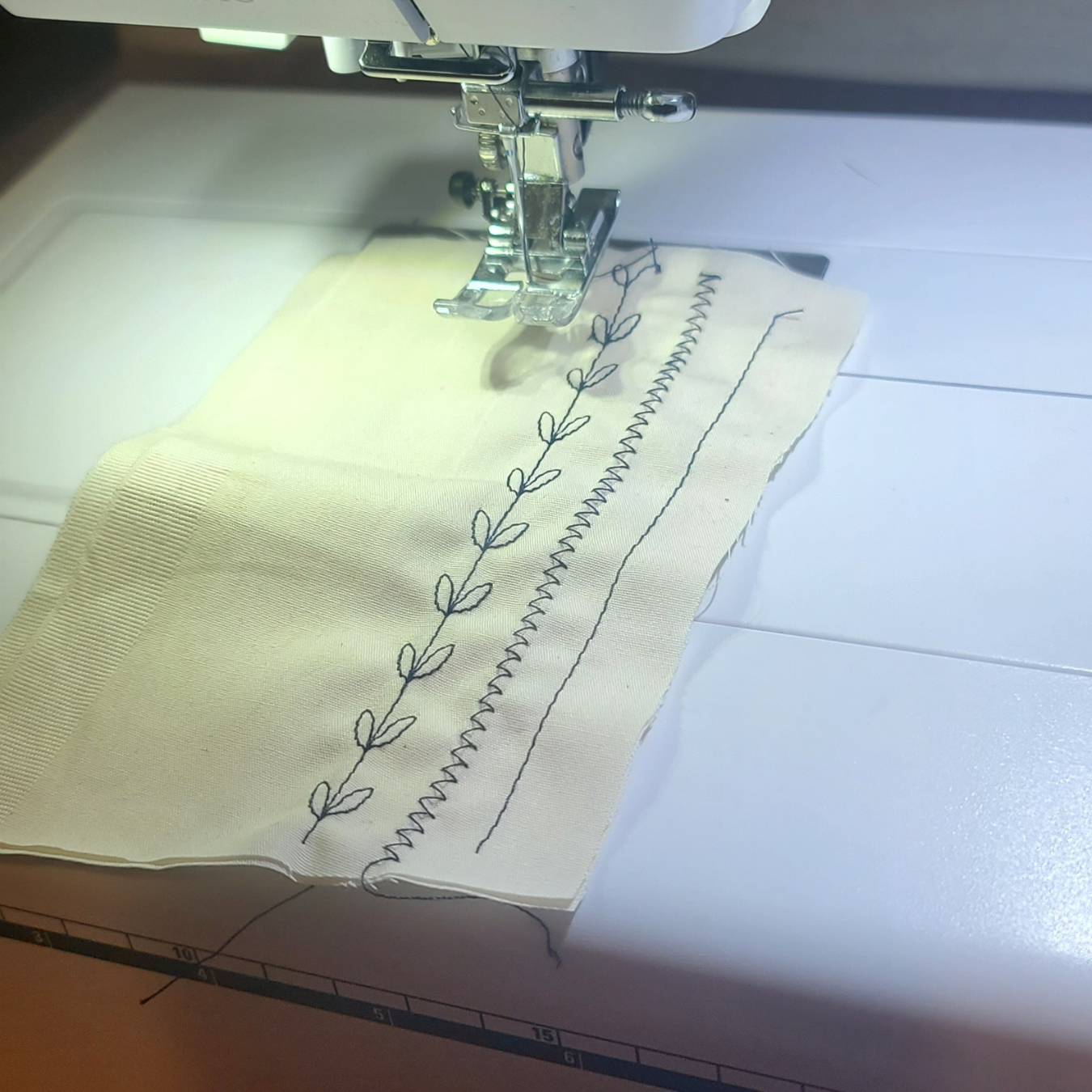
Take Your Sewing Machine in for Occasional Maintenance
Even if you know how to clean your sewing machine, you still need to take it to a repair tech for occasional maintenance. Most manufacturers recommend a tune-up every one to two years. Your sewing machine will last longer if you keep it maintained, and a repair tech will thoroughly clean and oil your machine, as well as perform repair work on moving parts and adjust your tension.
Most people wait to take their sewing machine in for a tune-up until there is a problem… Are you guilty of this? Preventative maintenance is a better route because it will save you money in the long run. It costs a lot less to get a tune-up than to pay for a diagnostic. If you can’t remember the last time you took your sewing machine in for maintenance, it’s probably time to do it.
When was the last time you cleaned your sewing machine? Do you have any questions? Let me know in the comments below.



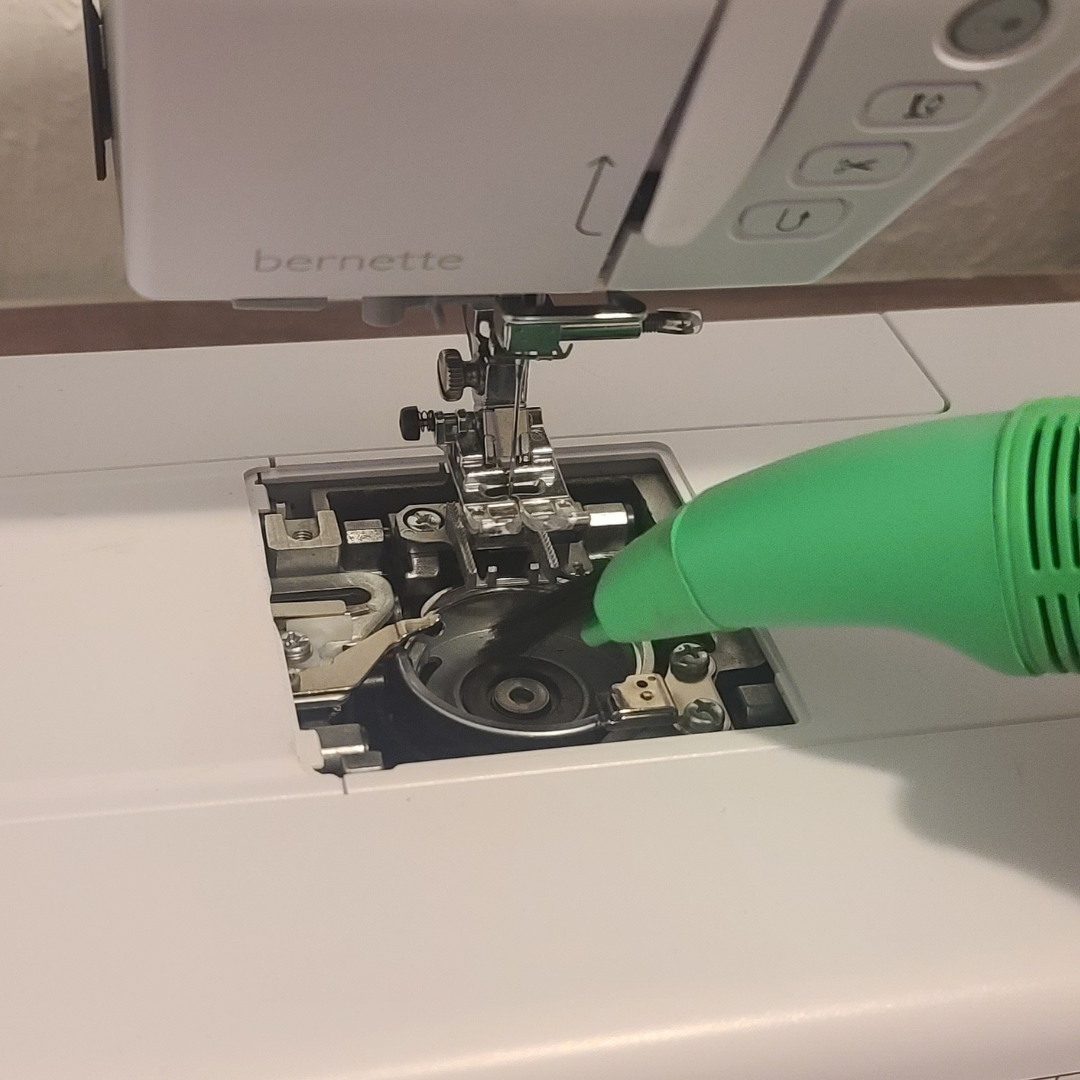
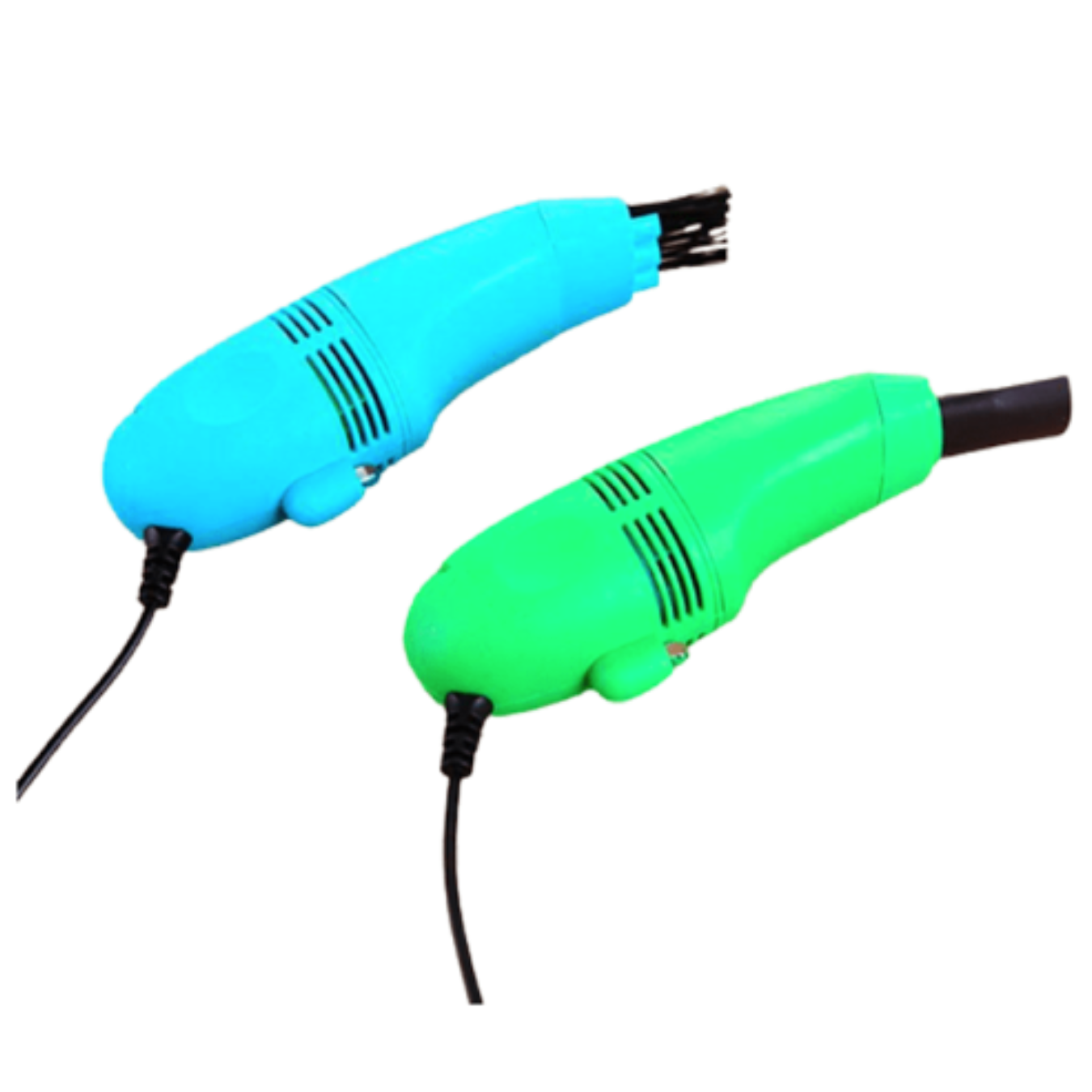

Pingback: Sew Pro Mini Sewing Machine Vacuum Instruction Manual - LuxvibeBeauty